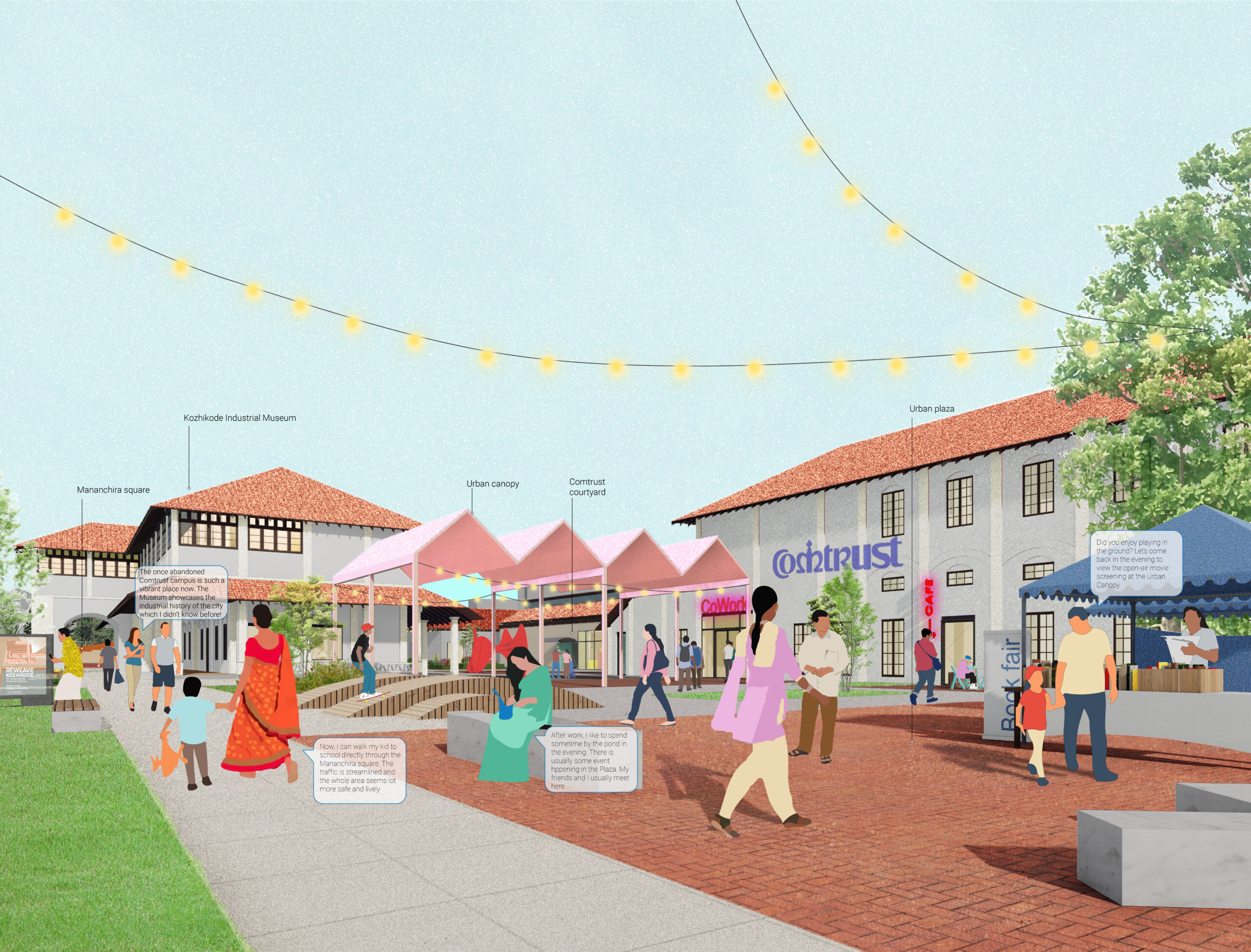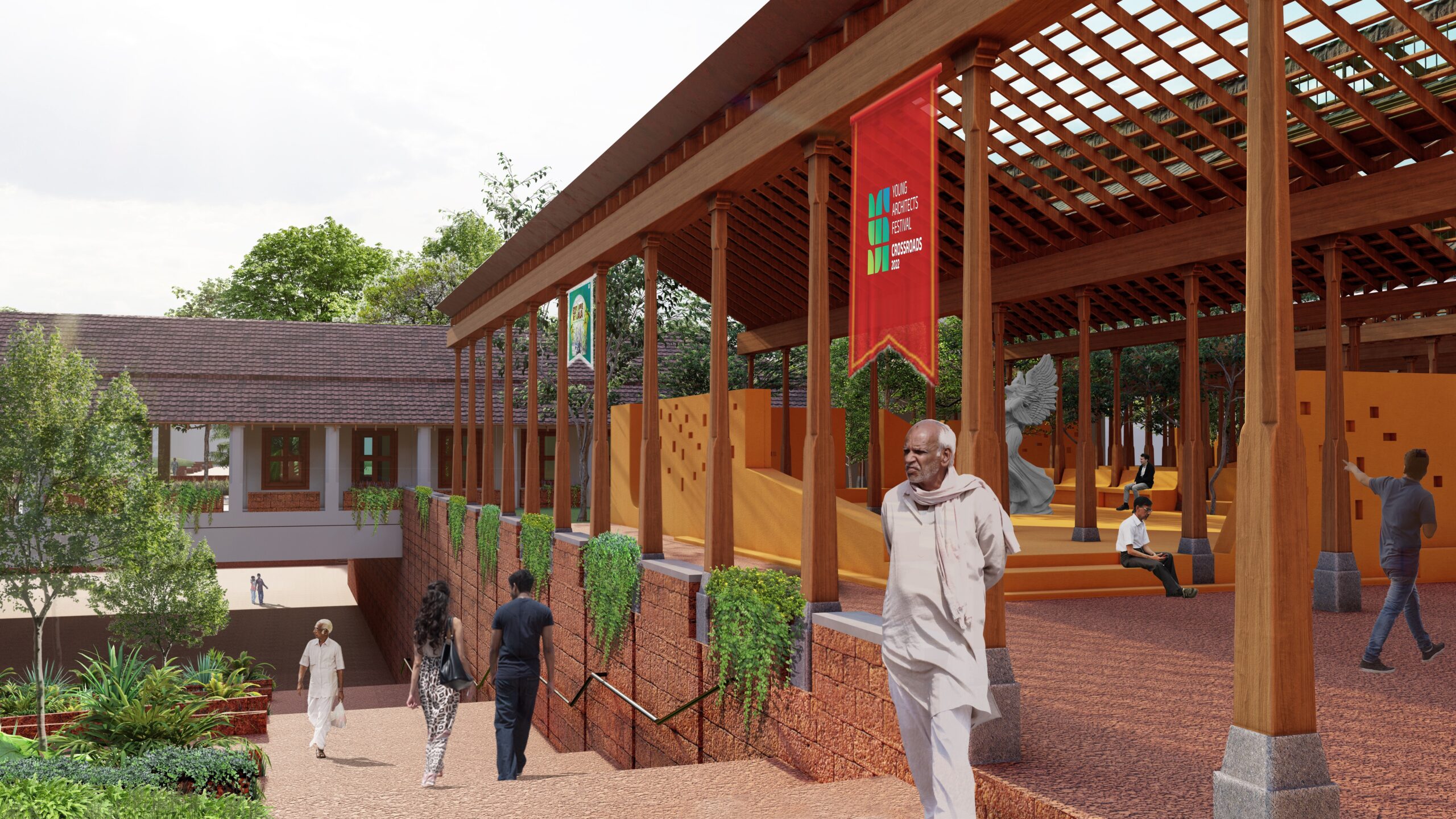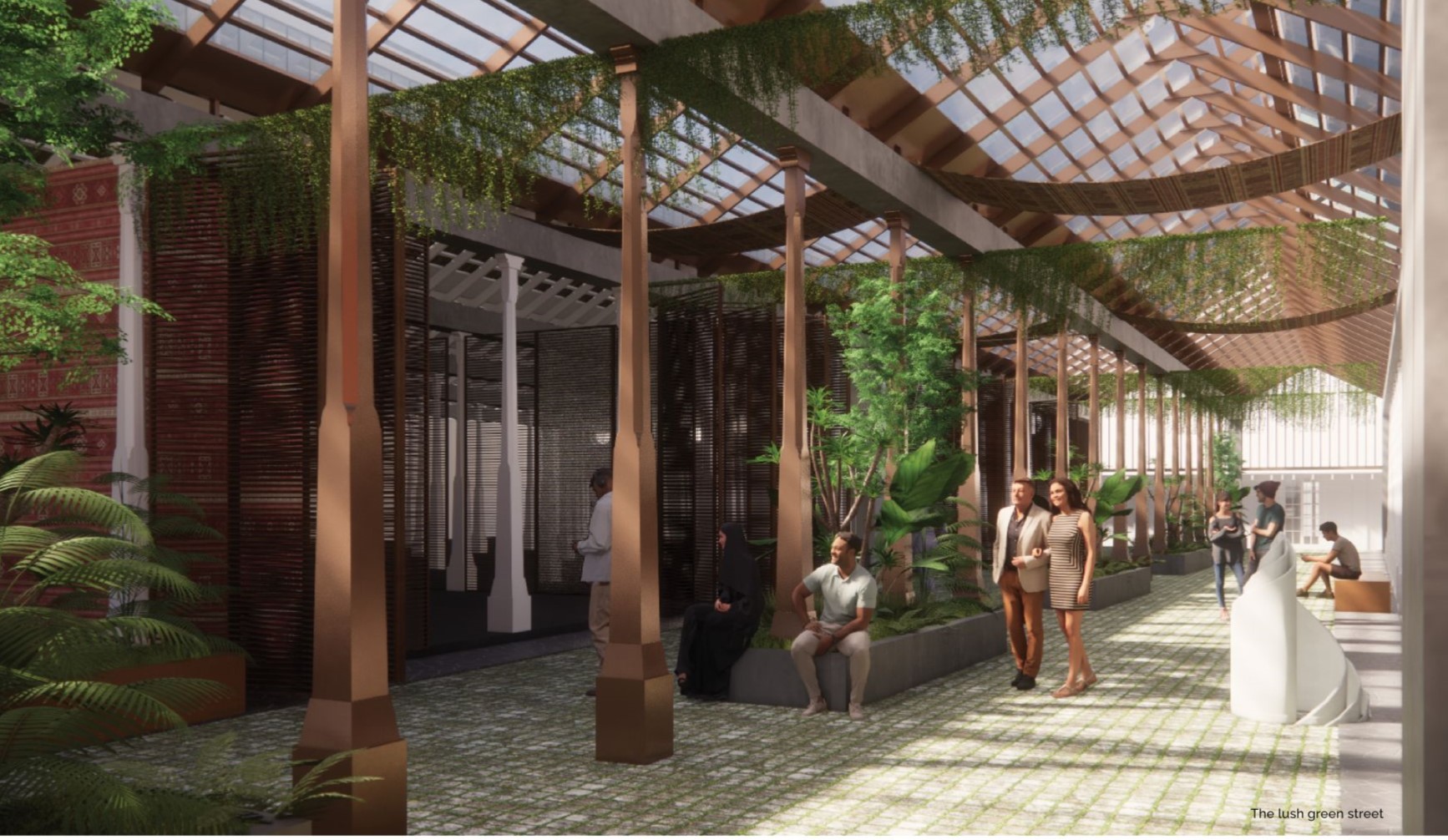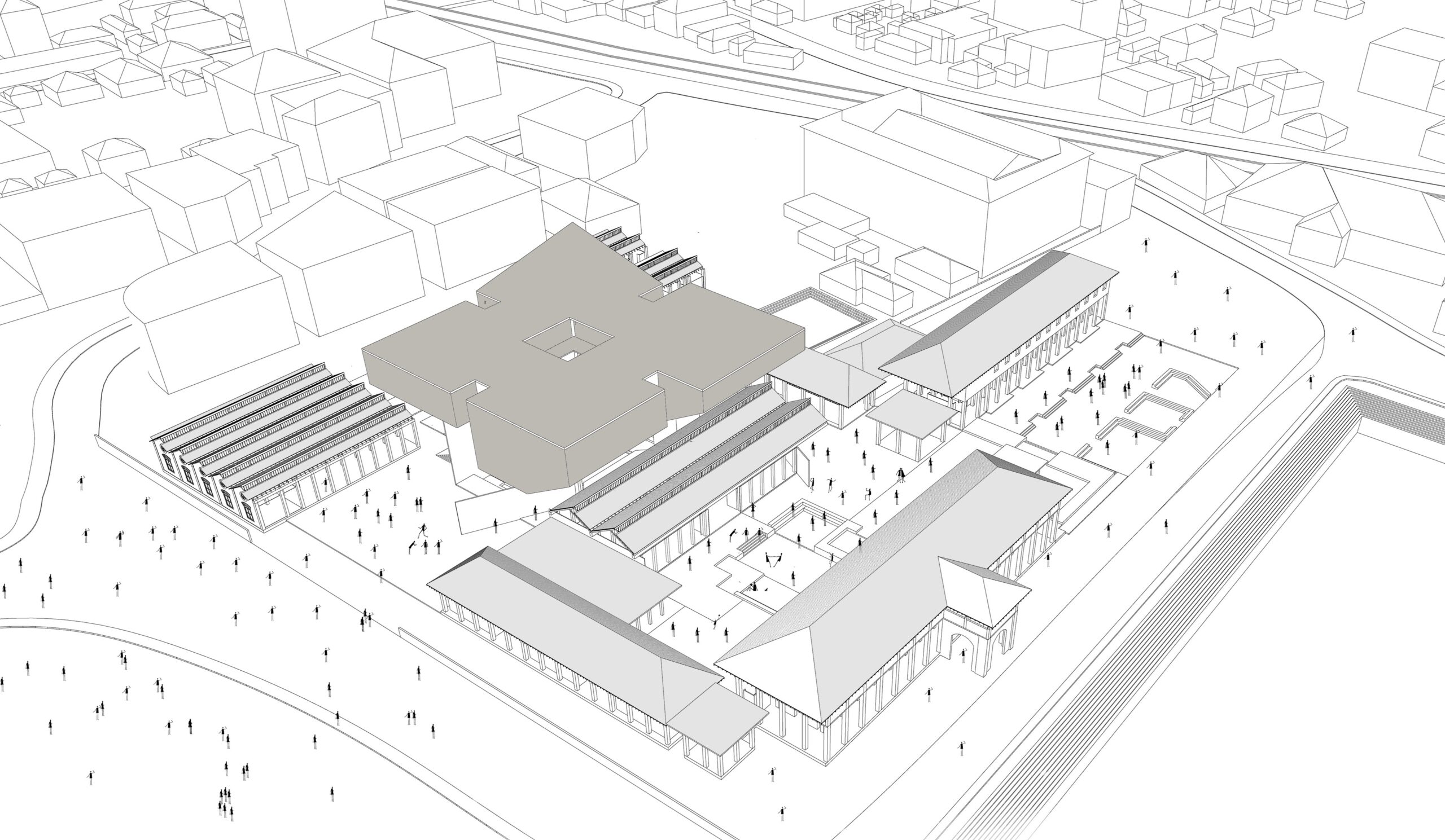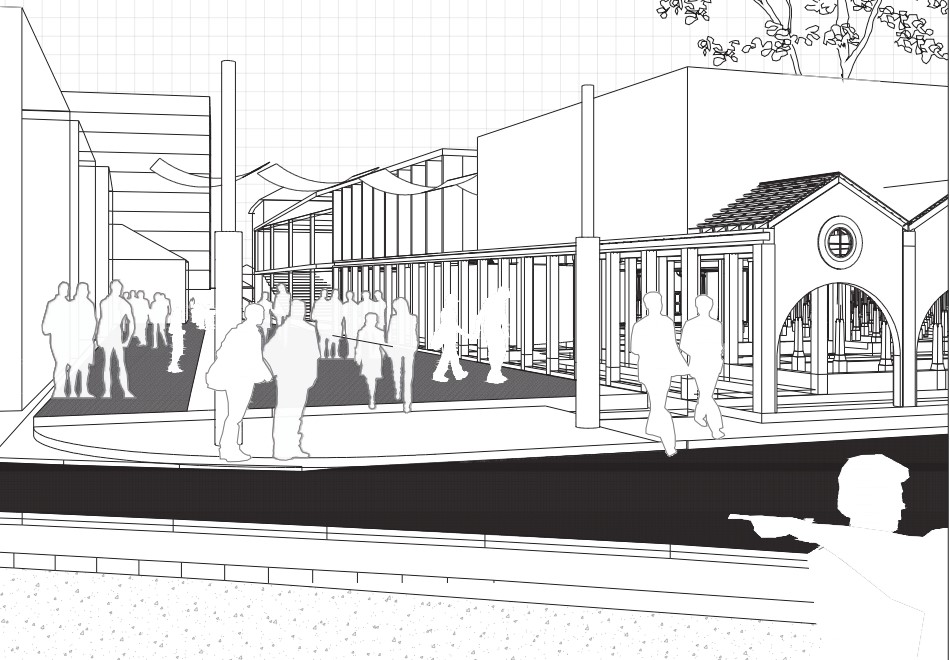![[Re]connecting Kozhikode: Finalist Entry by Mending Tomorrow | Reweave Kozhikode Competition 2 [Re]connecting Kozhikode: Finalist Entry by Mending Tomorrow | Reweave Kozhikode Competition 1](https://architecture.live/wp-content/uploads/2022/11/mending-tomorrow-reweave-kozhikode-1-1024x536.jpg)
Mending Tomorrow‘s [Re]connecting Kozhikode was chosen as the finalist in the Reweave Kozhikode Competition, held at YAF, by the IIA Calicut Centre.
Re-connecting Kozhikode intends to re-connect the people of the city with a place that has since time existed between them by tapping on the under-utilized potential of a heritage building right in the centre of the city.
Status Quo
Currently, the Comtrust factory and the precinct sit in the city centre like an island. Despite being well connected with the networks that lead to the beach, railway stations, SM Street, etc. the precinct remains subdued and life remains peripheral to the precinct. Current land value makes it furthermore difficult to utilize the high potential of these heritage structures in a manner that value adds to the public realm of the city and yet remains reasonable for the Comtrust. There is a dire need to devise a strategic solution that stitches the precinct into the city and yet remains viable to the patrons of the Comtrust.
People
Historically the Comtrust Weaving factory holds a key role in the industrialization of the Malabar region. Since its establishment by the Basel Mission in 1844, it had remained inclusive to all the rungs of society and played a vital role in creating an inclusive and cohesive social fabric in the region. Folklore says that people of this region have always been open and receptive to the various cultures and the changes that they bring along. Since the closing of the factory in 2009, various litigations and representations from the
workers of the Comtrust factory have happened. This disruption of the social fabric is evident in the role that the Comtrust factory plays in the life of the city and its people. This proposal intends to reweave the social fabric of the city through strategic design interventions which would bring the people of the city at the forefront in uplifting the fate of this once magnificent precinct. For any city, its people are the real patrons. This proposal imagines people of the city to be the key operators of the project in the form of (as below)
a. Equity holders
Comtrust is a key equity/stakeholder of the project and would be ensured revenue generation through optimized space making and incentives by the ULB in the form of TDR to capitalize from other areas in the city
b. Keepers
Keepers of the project would be an active committee/team of representatives elected from diverse citizen groups to ensure the efficient operation of this place.
c. Beneficiaries
Beneficiaries are the people of the city without whom the project would fail to find its purpose.
Places
Figure-ground study of the precinct shows a binary relation between the Mananchira square and the Comtrust factory building. Where the square acts as a public foreground to the built and the built holds the formal extents of the vistas that make up the entire experience of the precinct. One of the important warps of this urban fabric is the SM Street, which is already a highly sought place by the people of the city. This proposal intends to stitch the SM street and the precinct through connectors, enhancing the experience of this public space as an extension of the SM street and a node to pause on the way to the
Kozhikode Beach. Idea is to leverage the high land value by adding a public dimension to the heritage
value of the land. The existing factory building is opened up through subtractive strategies to create voids/places that would internalize the imagined extension of the SM Street and would let life flow within the building. This would generate footfall which can be catered by the ancillary spaces optimized through space-making approaches, that can generate revenue for its patrons.
Spaces
Existing heritage buildings offer nuanced spaces with a variety of possibilities. The subtractive place-making strategies will generate internal spaces that would be essentially public in nature, like an indoor street. These spaces would act as funnels to bring in people creating opportunities for commercial, recreational and cultural activities in the rest of the spaces.
This proposal intends to optimize the newly available spaces by following space-making strategies.
- [Re]purpose
Creating spaces with changes that ensure the re-purposing of existing spaces into spaces that can facilitate cultural, co-working, exhibits, vocational etc. types of activities. These would be mainly in the form of spatial re-configuration, infrastructural upgrades and aesthetically uplifting internal spaces. - [Re]charge
Spaces that share edges with the connectors, street edge and in-between opportunity spaces can be designed as recharge spaces like restaurants, cafes, vending spaces etc. These will add to the indoor street experience of the connectors. - [Re]tail
Spaces that are on the street edge and have commercial potential to benefit from the new footfall generated in the connector spaces would be designed for retail activities. - [Re]store
Spaces that deserve conservation from a heritage perspective are imagined to be restored as exhibits of the historic past of the Weaving industry in Kerala and its cultural relevance. - [Re]imagine
Spaces that are subtracted in this space-making process would be intervened with newly imagined spatial constructs that would enhance the experience for the visitors. Re-imagining the factory building as a public space to the city.
[Re]connecting Kozhikode, is imagined as a tripartite approach through people, places and spaces as its key components. It is pertinent to look at the proposal as a synchronized process and cannot be achieved in the absence of any of its components. The imagined usages are only conjectures of the possible usages of the place and space-making strategies and can be accurately defined only with the involvement of its
rightful stakeholders, once the proposal is shortlisted.
Presentation Sheets
![[Re]connecting Kozhikode: Finalist Entry by Mending Tomorrow | Reweave Kozhikode Competition 3 [Re]connecting Kozhikode: Finalist Entry by Mending Tomorrow](https://architecture.live/wp-content/uploads/2022/11/sheet1-723x1024.jpg)
![[Re]connecting Kozhikode: Finalist Entry by Mending Tomorrow | Reweave Kozhikode Competition 5 [Re]connecting Kozhikode: Finalist Entry by Mending Tomorrow | Reweave Kozhikode Competition 4](https://architecture.live/wp-content/uploads/2022/11/sheet2-723x1024.jpg)
![[Re]connecting Kozhikode: Finalist Entry by Mending Tomorrow | Reweave Kozhikode Competition 7 [Re]connecting Kozhikode: Finalist Entry by Mending Tomorrow | Reweave Kozhikode Competition 6](https://architecture.live/wp-content/uploads/2022/11/sheet3-723x1024.jpg)

